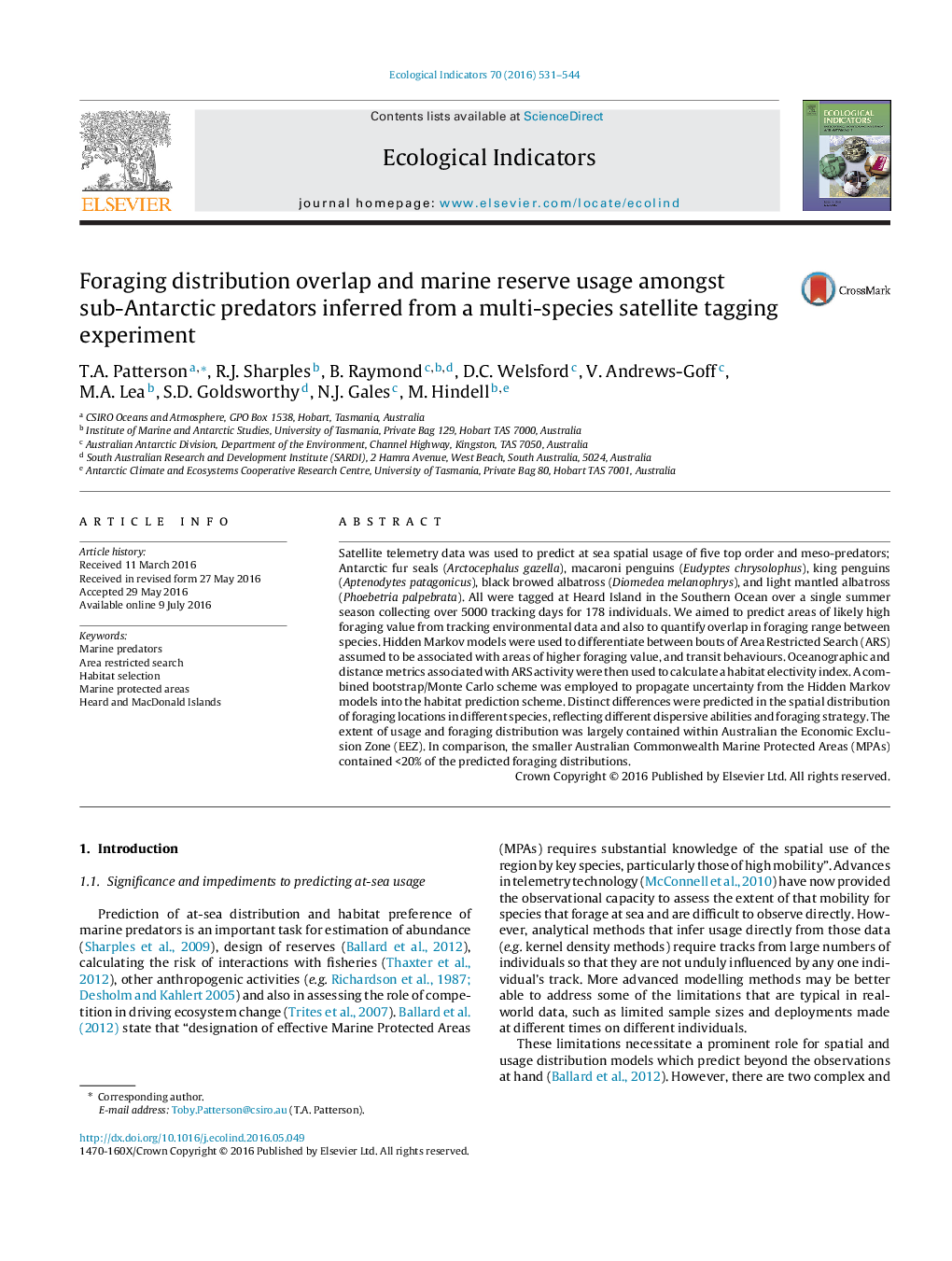| کد مقاله | کد نشریه | سال انتشار | مقاله انگلیسی | نسخه تمام متن |
|---|---|---|---|---|
| 6293152 | 1617132 | 2016 | 14 صفحه PDF | دانلود رایگان |
عنوان انگلیسی مقاله ISI
Foraging distribution overlap and marine reserve usage amongst sub-Antarctic predators inferred from a multi-species satellite tagging experiment
ترجمه فارسی عنوان
توزیع فورسپس همپوشانی و ذخیره ذخایر دریایی در میان شکارچیان زیر قطب جنوب که از آزمایش چندگانه ماهواره ای
دانلود مقاله + سفارش ترجمه
دانلود مقاله ISI انگلیسی
رایگان برای ایرانیان
کلمات کلیدی
موضوعات مرتبط
علوم زیستی و بیوفناوری
علوم کشاورزی و بیولوژیک
بوم شناسی، تکامل، رفتار و سامانه شناسی
چکیده انگلیسی
Satellite telemetry data was used to predict at sea spatial usage of five top order and meso-predators; Antarctic fur seals (Arctocephalus gazella), macaroni penguins (Eudyptes chrysolophus), king penguins (Aptenodytes patagonicus), black browed albatross (Diomedea melanophrys), and light mantled albatross (Phoebetria palpebrata). All were tagged at Heard Island in the Southern Ocean over a single summer season collecting over 5000 tracking days for 178 individuals. We aimed to predict areas of likely high foraging value from tracking environmental data and also to quantify overlap in foraging range between species. Hidden Markov models were used to differentiate between bouts of Area Restricted Search (ARS) assumed to be associated with areas of higher foraging value, and transit behaviours. Oceanographic and distance metrics associated with ARS activity were then used to calculate a habitat electivity index. A combined bootstrap/Monte Carlo scheme was employed to propagate uncertainty from the Hidden Markov models into the habitat prediction scheme. Distinct differences were predicted in the spatial distribution of foraging locations in different species, reflecting different dispersive abilities and foraging strategy. The extent of usage and foraging distribution was largely contained within Australian the Economic Exclusion Zone (EEZ). In comparison, the smaller Australian Commonwealth Marine Protected Areas (MPAs) contained <20% of the predicted foraging distributions.
ناشر
Database: Elsevier - ScienceDirect (ساینس دایرکت)
Journal: Ecological Indicators - Volume 70, November 2016, Pages 531-544
Journal: Ecological Indicators - Volume 70, November 2016, Pages 531-544
نویسندگان
T.A. Patterson, R.J. Sharples, B. Raymond, D.C. Welsford, V. Andrews-Goff, M.A. Lea, S.D. Goldsworthy, N.J. Gales, M. Hindell,
